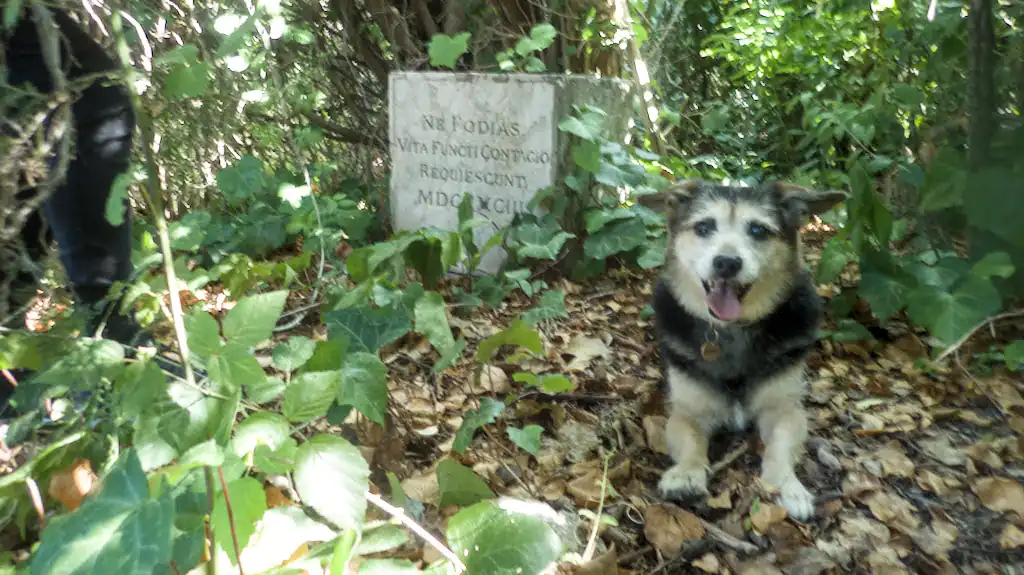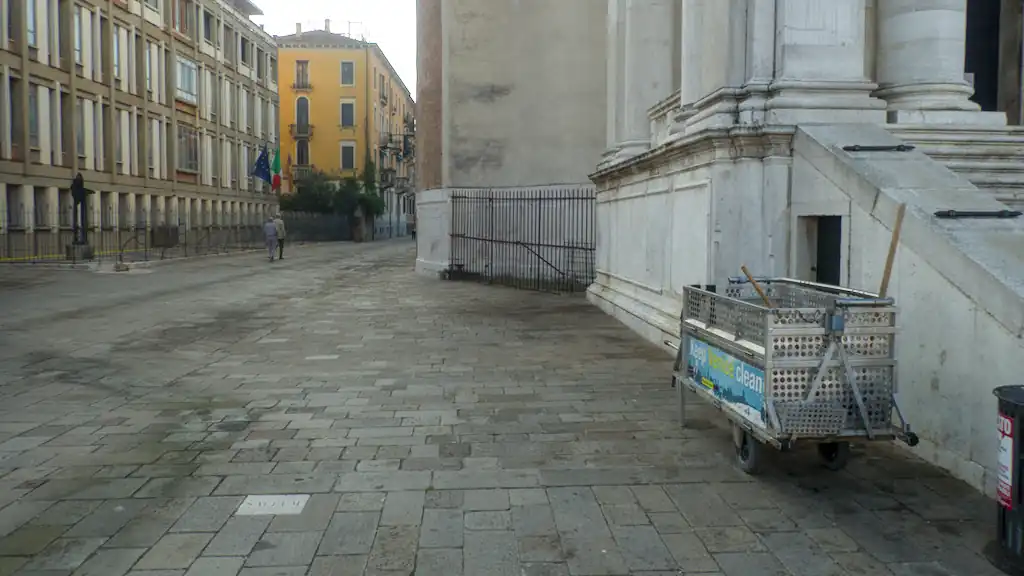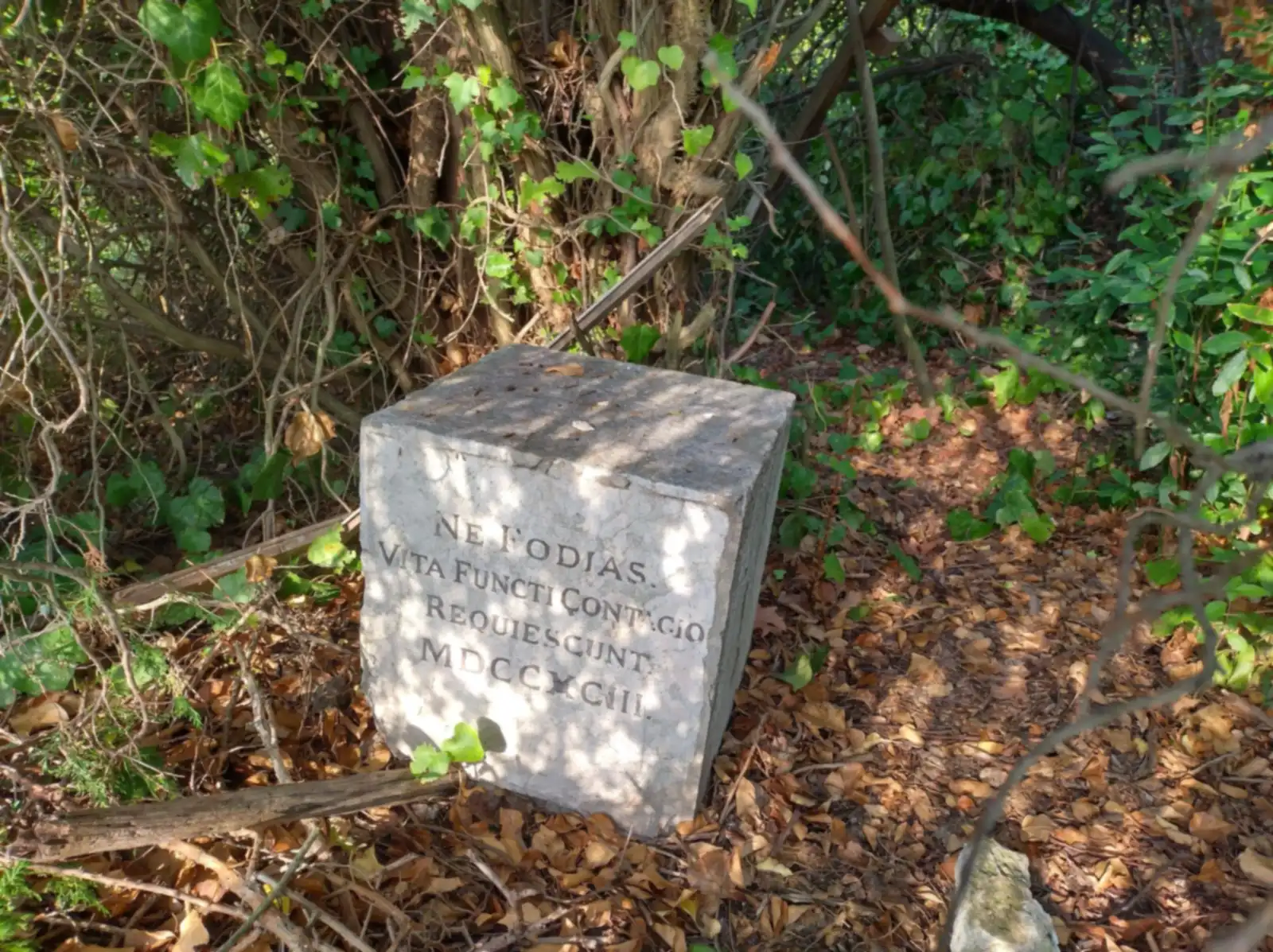The island of Poveglia in the Venetian lagoon is one of the most haunted in the world.
This has been well-known since the early 2000s, when an American TV station decided that insufficiently interesting historical facts objectively shouldn’t prevent them from getting an adequate audience for their advertisers.
The stepping stone for the TV station to that invented story, was, in fact, a stone.
The plague stone
I know that I’m not the only one who worries that that stone might one day disappear — that is, get stolen, as the island is all but abandoned — so whenever I’m out about in that part of the lagoon, I’ll go and have a look. Usually, I also take a photo to document the state of affairs.
This is the latest photo, from a few days ago.

Say Hello! to my faithful companion Giubba.
The inscription on the stone, in Latin, says more or less:
Do not disturb!
Those, who in life were contagious,
rest here.
1793
What does that mean?
The stone and the inscription are there for a specific reason, which has nothing to do with ghosts and crazy doctors, as the TV station imagined.
In 1793, an Ottoman ship arrived from Nauplia in the Peloponnese, with a crew of thirty, and a cargo of 9000 salted cheeses.
At that time, almost all ships entered the lagoon at Alberoni on the southern end of the Lido, and approached Venice from the south, which meant passing in front of Poveglia.
The island of Poveglia therefore sat in a good position to serve as a sanitary control post. In fact, the island was the Lazzaretto Nuovissimo in the late 1700s.
Apparently, there was some reason for concern because the Magistrato alla Sanità stopped the ship at Poveglia. It was ordered to stay, and throw anchor besides the island.
The merchant, who had bought the cheeses, wasn’t too pleased to see his delivery blocked.. A quarantine procedure could take a couple of months, so he organised a boat to go to Poveglia and pick of the cheeses.
The hired crew did just that. They rowed to Poveglia in the morning, moved the cheeses over using some planks as chutes, and headed back to Venice with the cargo in the evening.
A few days later, some of the Turkish crew fell ill.
There could be little doubt. The plague.
Luckily for Venice, the Magistrato alla Sanità was on the case rapidly.
In no time, all the Venetian workers were rounded up, put on a ship, and taken back to Poveglia, before the disease could spread.
Three ships would spend the next several months at anchor near Poveglia. The Turkish vessel, the one with the Venetian workers, and a third with armed guards on the lookout day and night, in case somebody tried to flee.
During this period, twelve persons died of the plague at Poveglia: eight of the crew of the Turkish ship, and four of the Venetian workers.
They were all buried on the island, in a separate part of the cemetery, and a stone placed as a marker.
That is the stone in the photo above.
A question
A friend, who was with me in the boat that day, reasonably asked: If only twelve persons died, why didn’t they put their names on the stone.
Only later did I come up with the answer, which is obvious once you have found it.
There are two reasons why there are no names on the stone.
Firstly, the stone wasn’t made for the dead, but for the living.
It is not a stone to commemorate the dead, but a warning to the living of the danger which killed the twelve.
Secondly, who were the dead? They were Greek or Turkish sailors, and Venetian manual labourers.
In the Venetian class system, they were close to the bottom, and such people generally didn’t have grave markers.
The tombs of the poor
The only people who got a burial with a stone or a marker, were those who could afford it.
Poor Venetians mostly finished in anonymous communal graves, and each parish in Venice had a pauper cemetery. The location of such burial areas for the poor are often marked in the paving with a yellowish stone with the word “SACRUM” inscribed.

Every once in a while I spot one when walking around Venice. I have seen such stones at San Simeon Piccolo, at Santa Fosca, at Santi Apostoli and at San Giacomo dell’Orio, but there are no doubt more.
In other places, such cemeteries have left different signs. At Santi Giovanni e Paolo, the further from the canal, stands a tall tree. That is where the graves of the poor were.
At Santo Stefano, behind some buildings in front of the church, is a Campiello dei morti — a little square of the dead. Again, the pauper cemetery of the parish.
In other places, street names like Calle dei morti and Calle del cimitero are tell-tale signs.


Leave a Reply to René Seindal Cancel reply